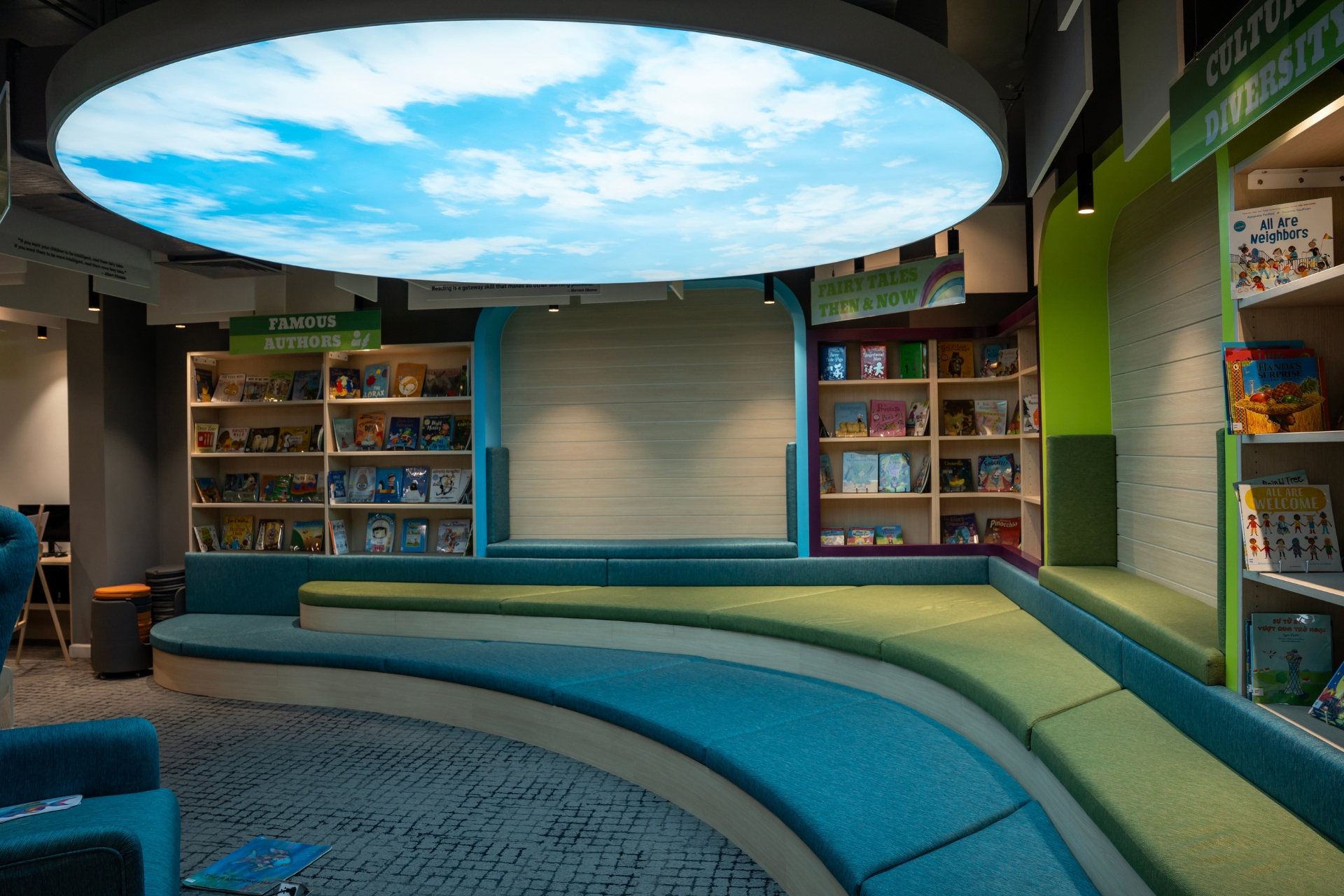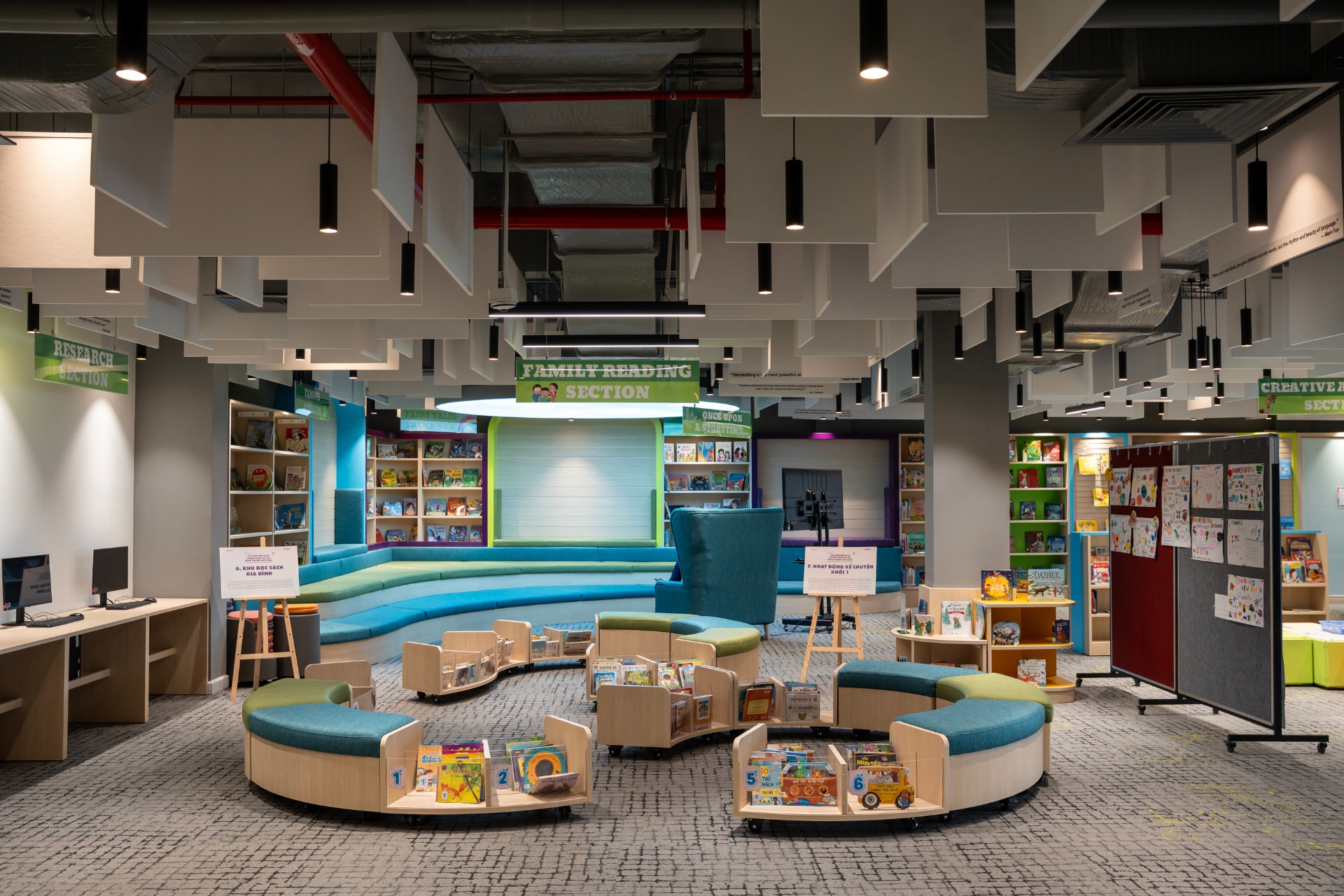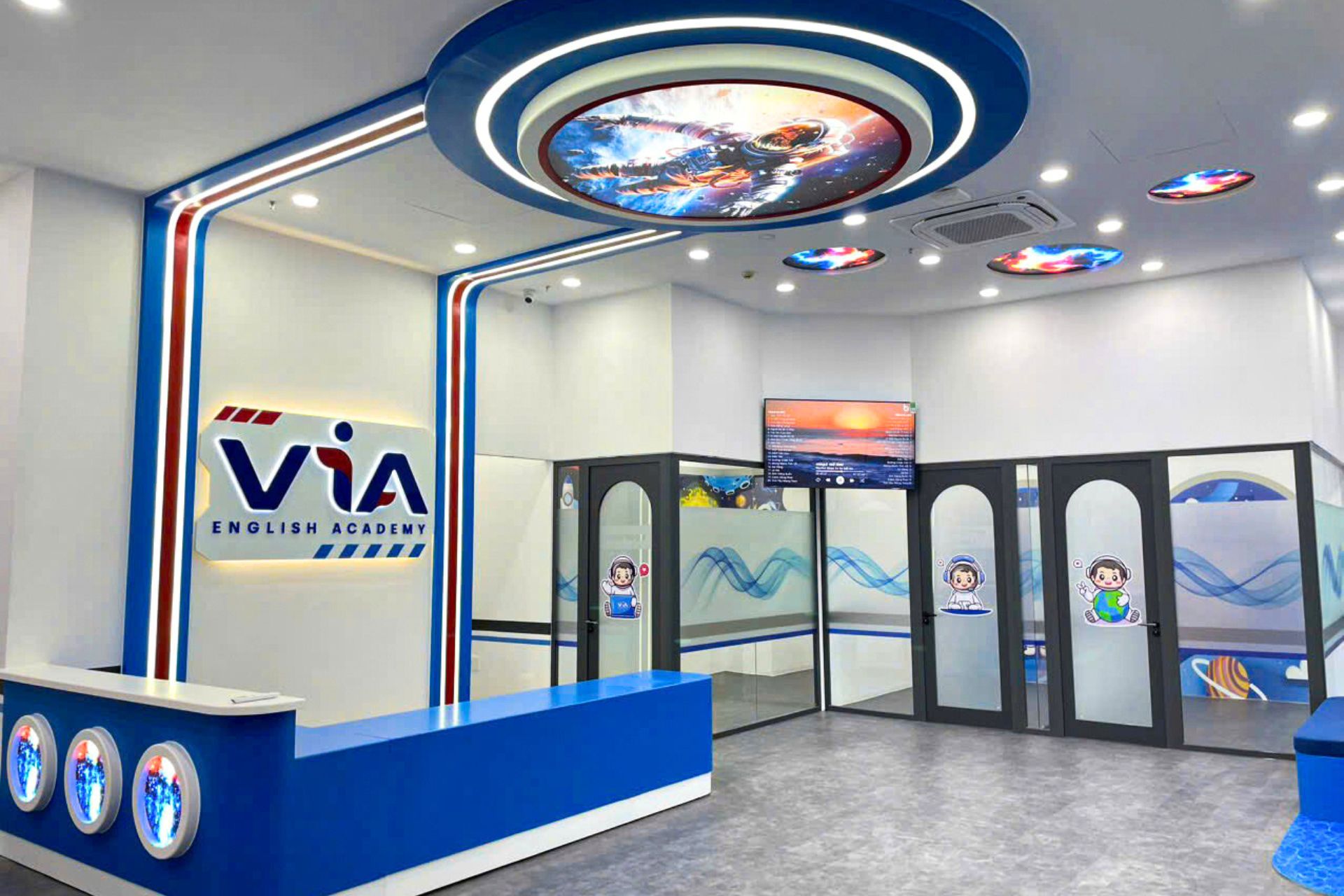
The Role of Lighting in English Center Design
In English center design, lighting is a crucial factor that affects the learning experience, student concentration, and teaching efficiency. Prioritizing a well-thought-out lighting design not only creates a comfortable space but also enhances cognitive abilities and knowledge retention. Let’s explore with TECO the role of lighting in English center design, the common types of lighting, and key lighting design principles.

The role of lighting in english center design
The Importance of Lighting in English Center Design
Impact on Psychology and Learning Performance
Lighting has a significant impact on the human circadian rhythm. Natural light or white light improves alertness, reduces stress, and enhances concentration. Conversely, dim or insufficient lighting can cause drowsiness, fatigue, and reduced learning performance. Therefore, proper lighting design is essential to ensure an adequate level of brightness for both teaching and learning activities.
Creating a Flexible and Inspiring Learning Space
Lighting can make a space feel more open, airy, and inviting. A well-lit English center helps students feel comfortable, thereby improving their learning efficiency and interaction with teachers and classmates.
Protecting Eye Health
Students spend a lot of time reading books, looking at whiteboards, or using computer screens. Thus, ensuring adequate lighting and minimizing glare is crucial in preventing eye strain, headaches, and visual fatigue.
Enhancing Aesthetic Appeal and Brand Identity
Lighting systems can be used to highlight logos, slogans, and brand colors, strengthening brand recognition and creating a unique identity for the center. Additionally, indirect lighting or decorative LED lights can contribute to a modern, youthful, and inspiring learning space.

Using cosmic-themed decorative lighting to reinforce brand identity.
Common Types of Lighting in English Center Design
Natural Lighting
Natural light is the best option as it provides visual comfort, energy efficiency, and a pleasant learning environment. TECO suggests several ways to maximize natural light in English centers:
- Large windows: Installing large, transparent glass windows allows natural light to penetrate deeply into classrooms, providing adequate illumination for students.
- Optimized classroom layout: Classrooms should be positioned to receive optimal natural light, ideally facing north or east to avoid harsh afternoon sunlight. Additionally, seating arrangements should be designed to ensure even light distribution and prevent shadows or glare.
- Reflective and light-transmitting materials: Using light-colored walls, mirrors, or reflective surfaces helps distribute natural light more effectively. Glass partitions instead of solid walls allow light to flow freely between spaces.
- Adjustable curtains and shading: Translucent curtains or adjustable blinds help control the amount of light at different times of the day.
Artificial Lighting
In English center design and construction, artificial lighting plays a crucial role in creating a comfortable, effective, and professional learning environment. Below are the most common types of artificial lighting used in English centers:
| Type of lighting | Function | Commonly Used Fixtures |
| General lighting | Illuminates the entire center to provide sufficient brightness for students and teachers. | Recessed LED downlights, LED panel lights, LED tube lights. |
| Accent Lighting | Highlights logos, slogans, or special areas like the reception desk and bulletin board. | Ceiling cove LED lights, wall-wash LED strips, illuminated acrylic signs. |
| Decorative lighting | Creates an aesthetically pleasing space, stimulates creativity, and makes learning more engaging. | Artistic pendant lights, neon sign lights. |
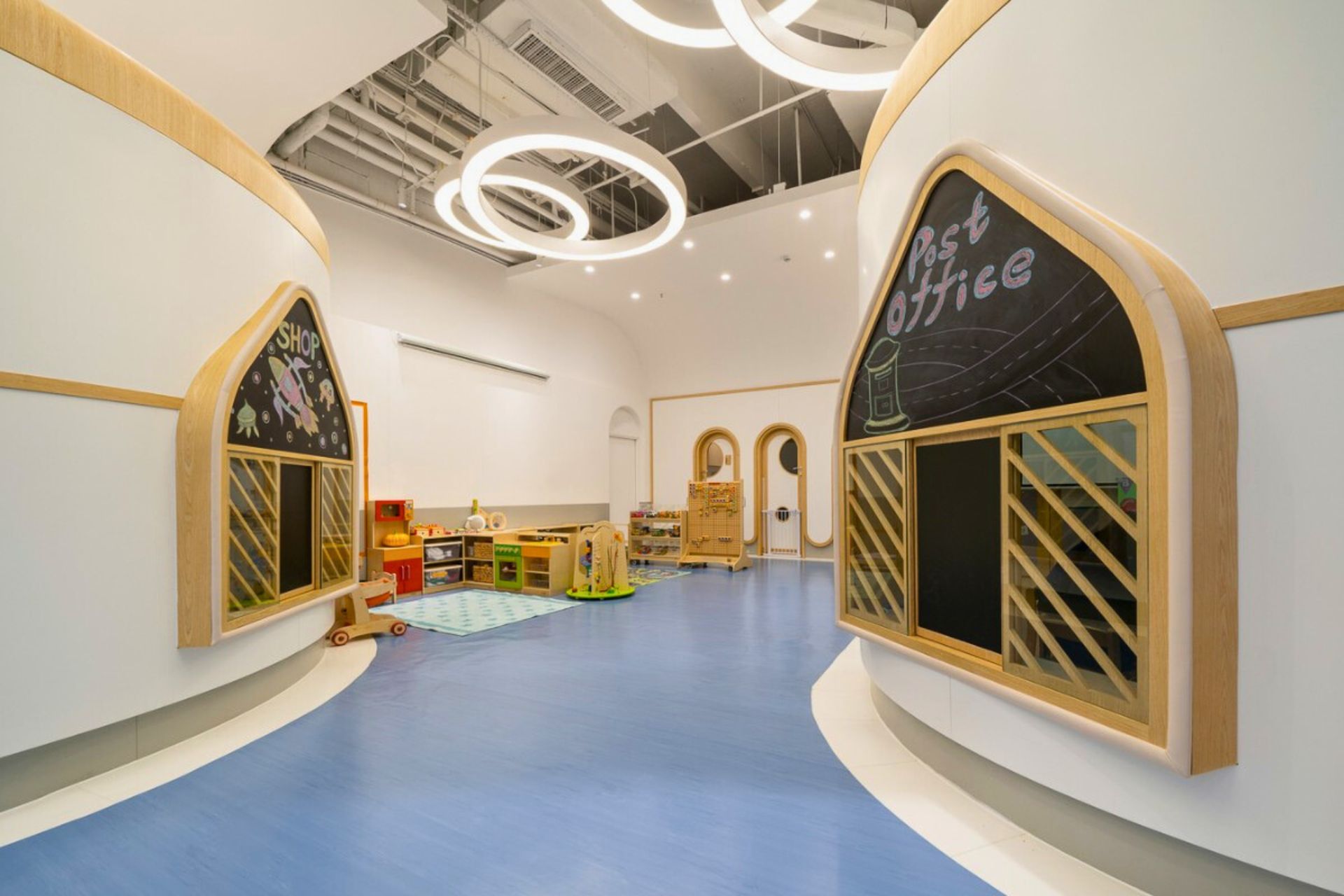
Using pendant LED lights to enhance the visual appeal of an English center.
Key Considerations in Lighting Design for English Centers
Ensuring Proper Brightness Levels
The recommended illuminance for classrooms is between 300 – 500 lux to ensure clear visibility. In shared workspaces, brightness can be slightly lower but must still prevent eye strain. For classrooms: Use neutral white light (4000K – 5000K) at 300 – 500 lux to ensure students can read and write comfortably. For reception areas and hallways: Warm white light (3000K – 4000K) creates a welcoming and friendly atmosphere.
Avoiding Glare and Shadows
Lighting fixtures should not be placed directly above computer screens or whiteboards to minimize reflection and glare. Additionally, lights should be evenly distributed to prevent harsh shadows that might cause discomfort for students.
Combining Multiple Light Sources
A balanced mix of natural and artificial lighting ensures flexibility and adaptability. Maximizing daylight exposure through large windows or glass walls reduces reliance on artificial lighting during the day. At the same time, energy-efficient LED lighting helps maintain consistent brightness levels throughout classrooms and functional areas.
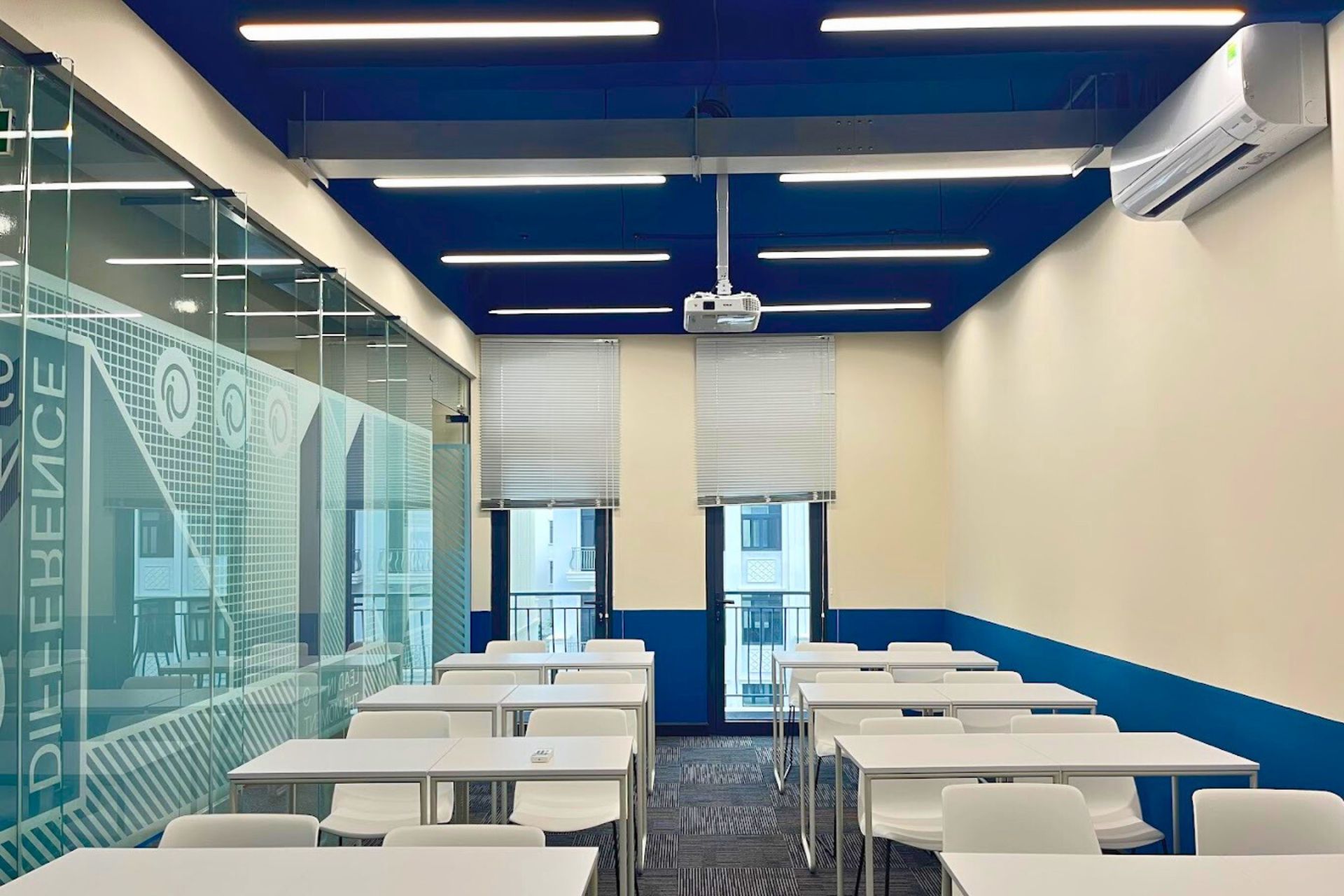
Utilizing multiple light sources to provide sufficient illumination for students.
Conclusion
Lighting design in English centers goes beyond simply installing light fixtures—it is a blend of science and art aimed at creating an optimal learning environment. By leveraging natural light and incorporating well-planned artificial lighting, English centers can enhance educational quality, improve student concentration, and offer an engaging learning experience.


